Shawn and Anna Bisaillon, Professional Carpet Systems of N. Denver
by Elisabeth Reinhart and Rosemary Reinhart
“If better is possible, good is never enough.” This is the mantra for Shawn and Anna Bisaillon’s Professional Carpet Systems of N. Denver. The company’s mission statement is to “provide the most excellent service experience ever.” They focus on cleaning as a specialty and offer restoration, deep cleaning, and maintenance cleaning on all types of floor coverings and upholstery. Professional Carpet Systems of N. Denver is located in Superior, Colorado and provides service along the Front Range.
Shawn is one of the industry’s foremost experts on fabric care and provides certification training on best practices locally and internationally. Shawn, Anna, and their team of seven cleaning specialists are dedicated to excellent service.
From residential homes to university dorms to city government buildings, their team is equipped and entrusted to handle the most difficult – and delicate – of cleaning needs.
Evolving from Cleaning Technician to International Cleaning Expert
Shawn’s passion for and expertise in all facets of the cleaning industry is the foundation on which he and Anna have built their business. Shawn started working in the cleaning industry 30 years ago in Berthoud, Colorado under the mentorship of his uncle, who specializes in oriental rugs. Shawn started out as a technician, earning cleaning certifications and getting on-the-job training. When he took a position as a manufacturer’s rep, he learned about the industry’s equipment and tools. One of the management owners of the equipment business recognized Shawn’s desire to teach and asked him to be a trainer and certification instructor for carpet cleaning.
Shawn excelled at teaching and became well-known in the industry. For his hands-on workshops, he dons goggles and a lab coat complete with badges of industry certifications to become a “Stainologist.” Before COVID-19, he was traveling six to eight months of the year conducting training in best practices for cleaning, including the appropriate processes, chemistry, equipment, and styles of cleaning. Since Spring 2020, Shawn has been conducting his certification workshops via Zoom.
Providing Excellent, Professional Cleaning
“We’re a professional cleaning company. We understand the cleaning science, not just how to polish it up, but how to truly make it clean,” Shawn said. His technicians “are professional cleaners, doing what I teach.” These technicians are salaried, not on commission as is typical of many cleaning companies, which means they can focus on service and quality. The company has five operating trucks and a 4,500-square-foot warehouse. The major part of their business is cleaning carpets. They also clean many other surfaces, including wood floors, area rugs, tiles, countertops, garage floors, and upholstery.
The company is certified by the Institute of Inspection, Cleaning and Restoration Certification (IICRC). As Seal of Approval service providers, the company performs cleaning that meets the requirements of manufacturer warranties. Several years ago, they became part of the franchise group Professional Carpet Systems to enhance marketing and brand consistency.
Another way their company stands out from the competition is by educating their clients. “One of the things that I try to do is help my clients understand how to take care of what they have,” said Shawn. The company’s technicians give every first-time customer the booklet Carpet Cleaning Tips for Dummies from the Carpet and Rug Institute (CRI).
For certain specialty carpets and textiles, they offer the product Fiber ProTector. It is a high-grade protectant for delicate fabrics such as silk that need special protection from soil and stains. Shawn recommends it for designers, decorators, and homeowners to protect fabrics that are “not even serviceable if they get stained or soiled.”
The company has a minimum charge to accommodate about 30 to 60 minutes in the home to assess the job. “We charge by the square foot, based on the condition of the carpet,” Shawn said. “We’ll lay out the entire job by estimating it and blocking it and using a black light to thoroughly inspect it prior to the service.” Shawn’s favorite part of the job is “the miracle look on someone’s face when they realize what we were able to do for them.”
Participating in and Serving the Community
Shawn and Anna met soon after she moved to Colorado from the Czech Republic. They recently celebrated their 23rd wedding anniversary. Their fifteen-year-old son Jakub joined the company, at his request, as an employee and is now a certified cleaning technician. Jakub enjoys playing three musical instruments and performing in the Monarch High School marching band.
In 2019, Shawn won the cleaning industry’s Ralph Bloss Humanitarian Award. Shawn said, “I think that a cleaner needs to have a servant attitude.” He is a member of the Professional Association of Cleaning and Restoration (PACR), a group of professional cleaners who push the industry to get better. “We believe in credentialing and employing our staff to do better.”
Through Anna’s work on the Superior Chamber of Commerce, the company has participated in projects to help those in need in the community. Every month, the company provides a free home cleaning to a family in need identified by A Precious Child program. Every year for the last several decades, they’ve joined with other cleaning companies in the annual cleaning of the Ronald McDonald Houses in Aurora and Denver.
Contact Information
You can reach Professional Carpet Systems of N. Denver by calling 303-403-1900 or by booking an appointment online. Their website is https://mail.pcssuperior.com/ and they maintain an active presence on Facebook under “Professional Carpet Systems of N. Denver.”
Professional Carpet Systems of N. Denver offers “big business service with a small company attitude,” Shawn said. They welcome the opportunity to make long-term community connections with residents in West Woods Ranch. They are excited to help you with your cleaning needs.


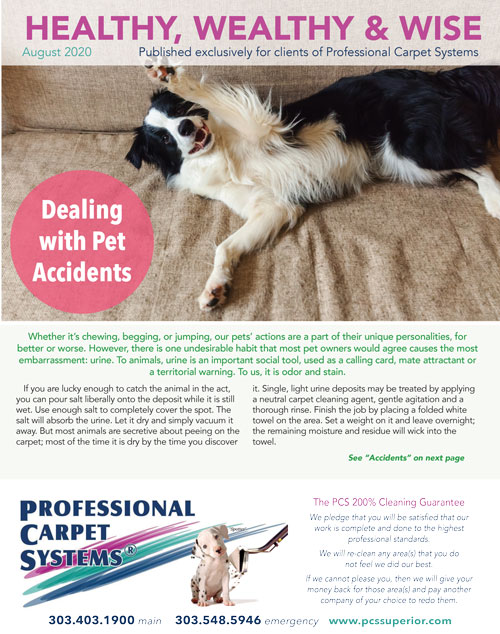 Click Here to see the full Newsletter
Click Here to see the full Newsletter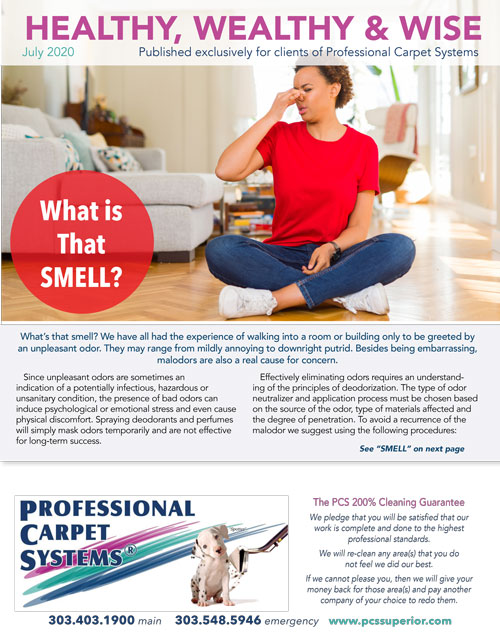



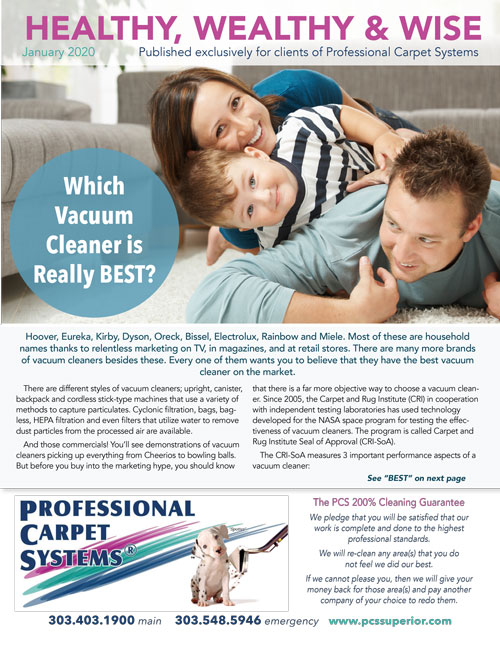 Click here to see the full newsletter
Click here to see the full newsletter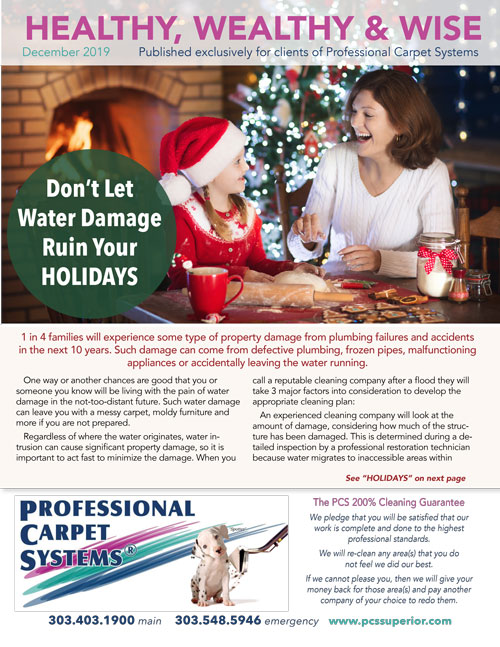
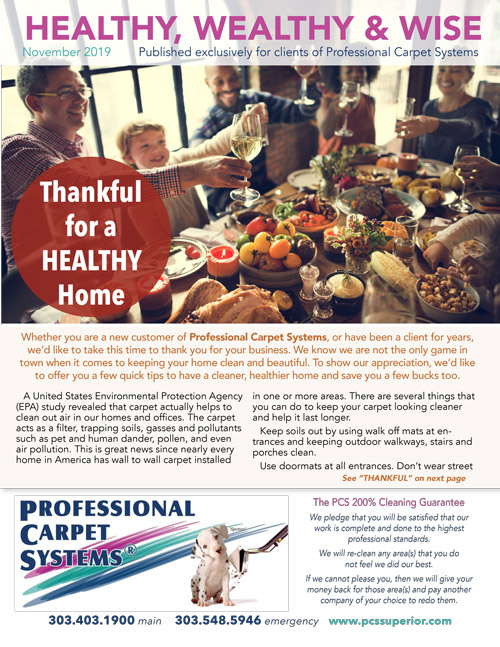 See the full newsletter
See the full newsletter